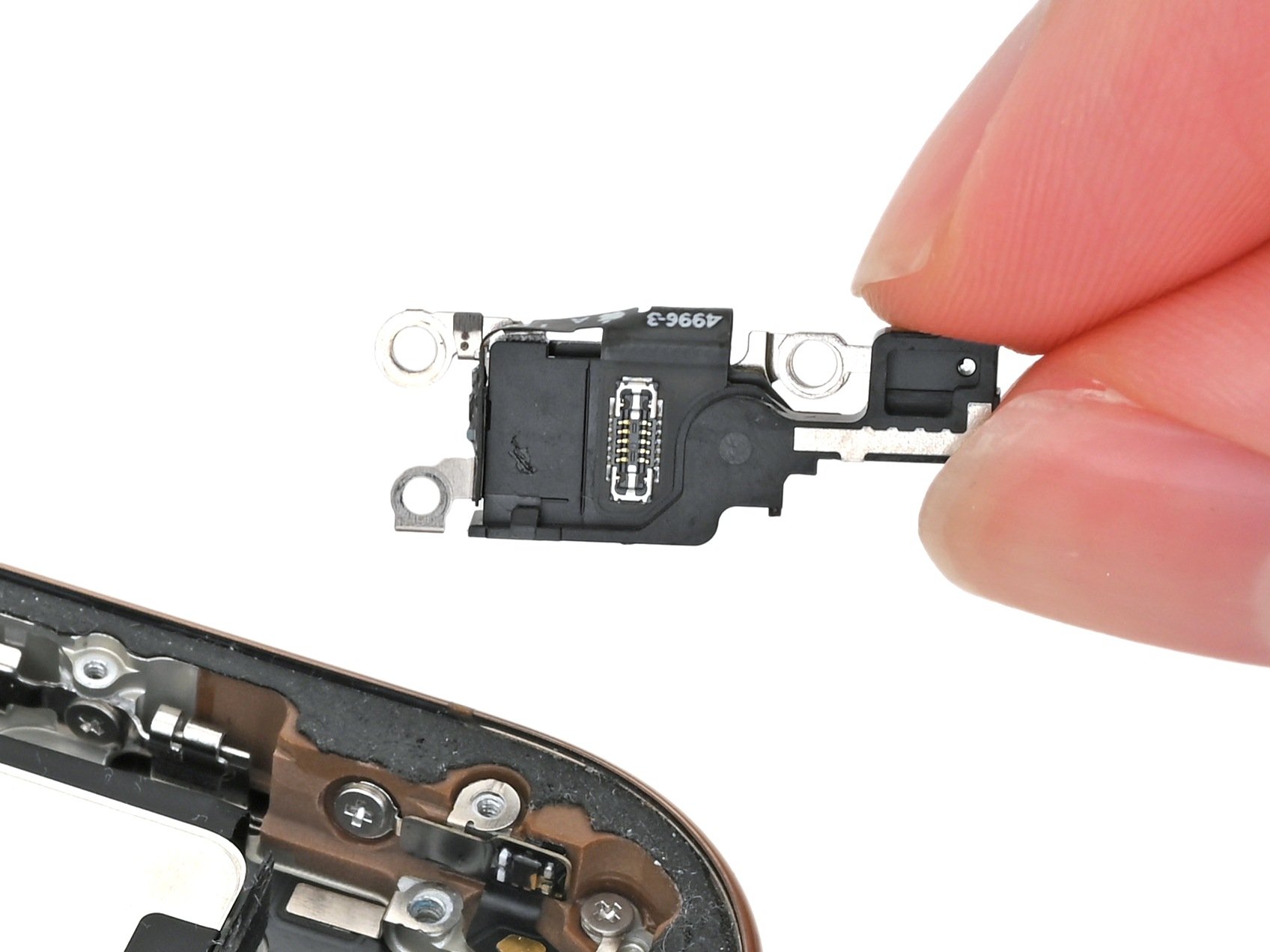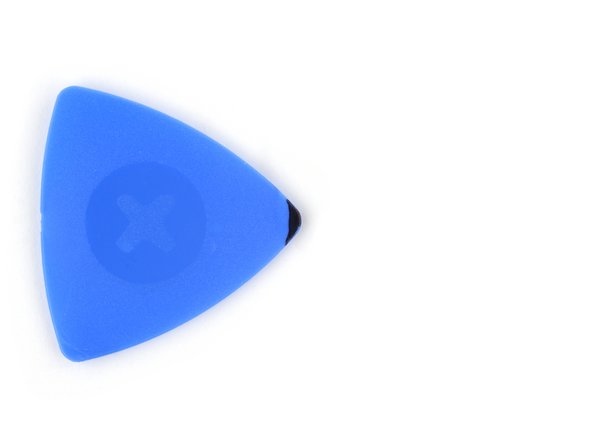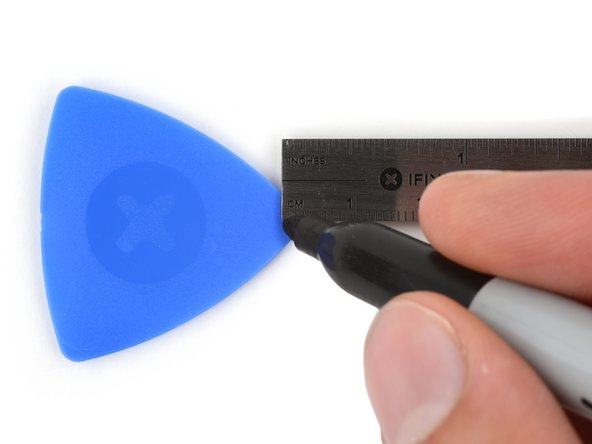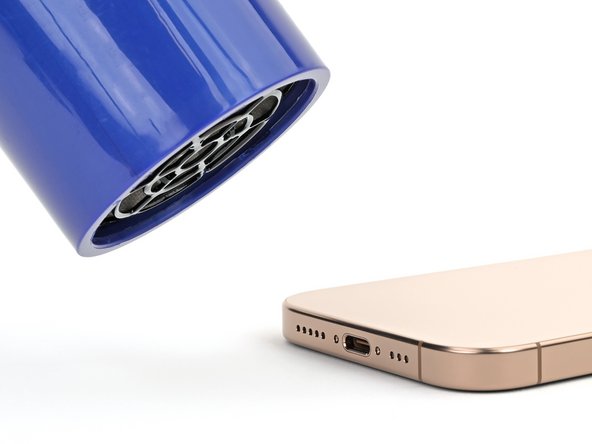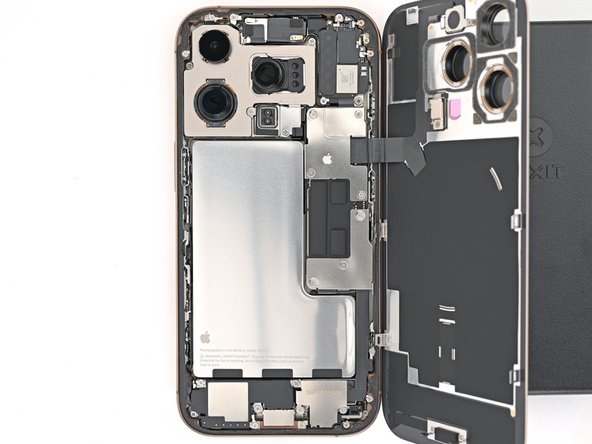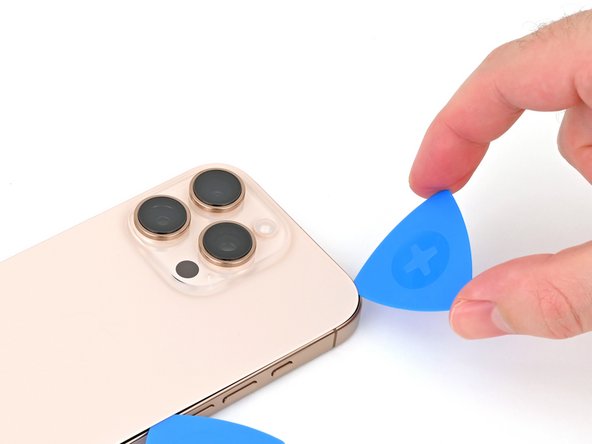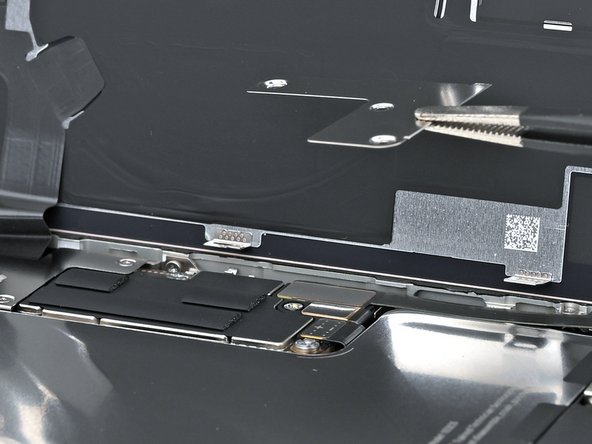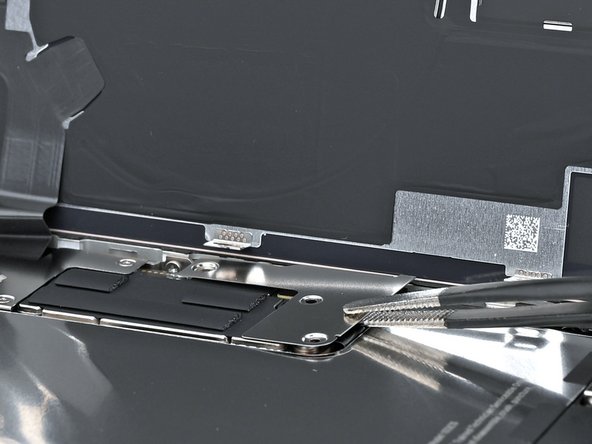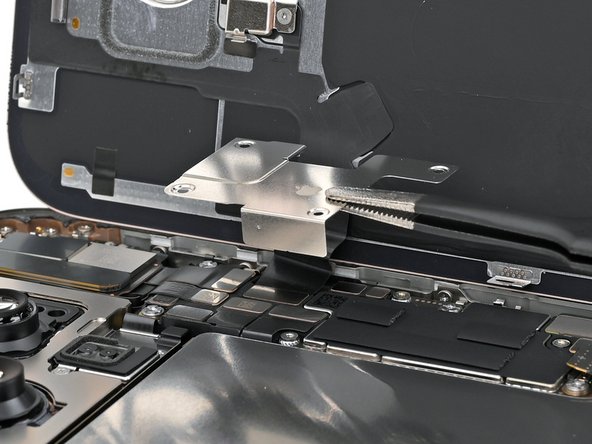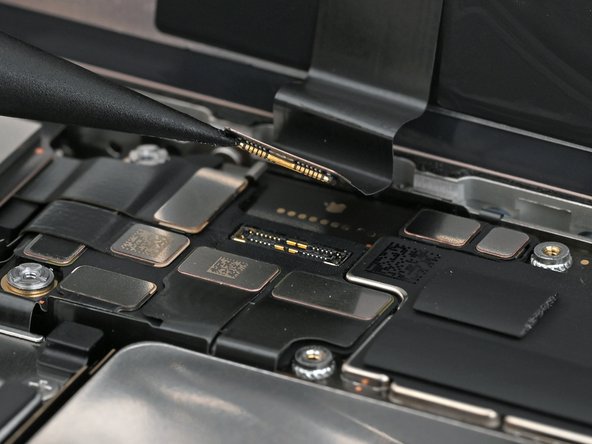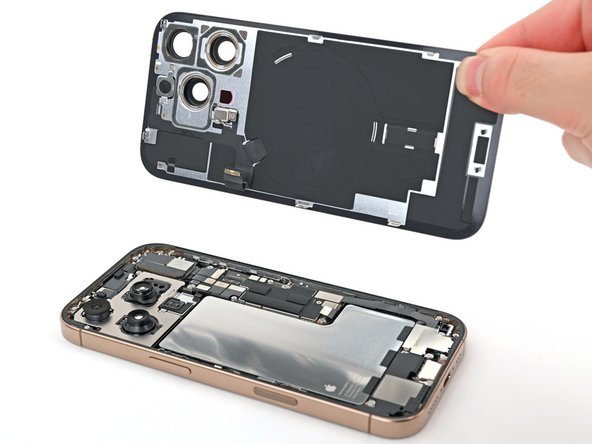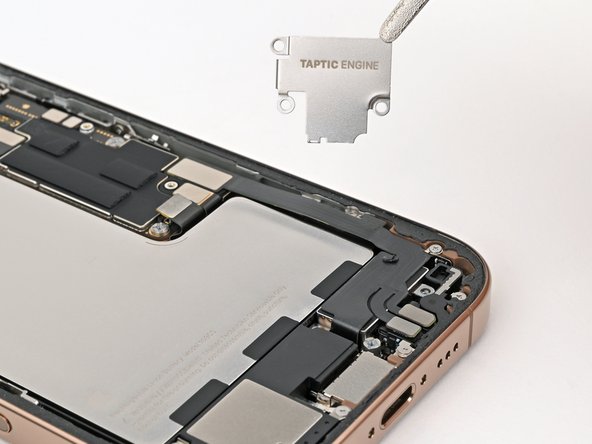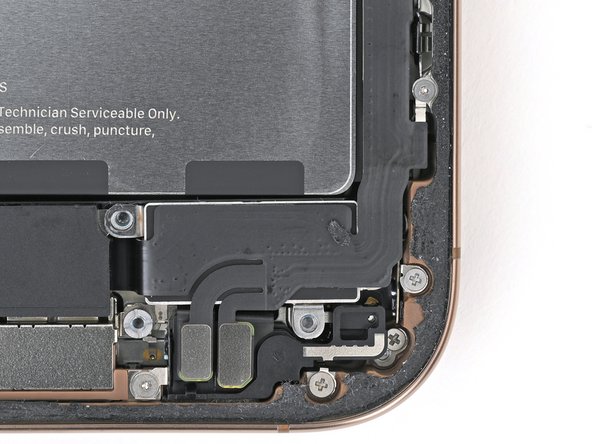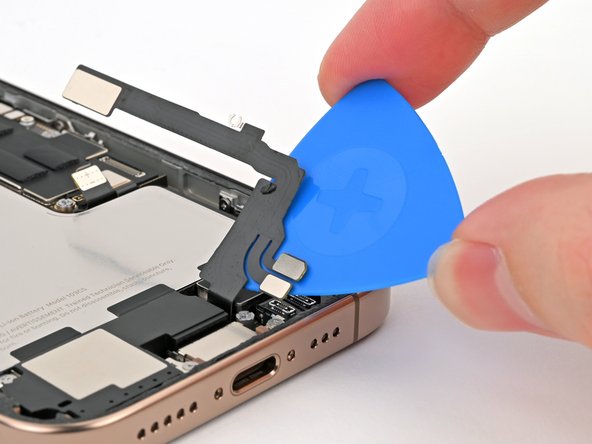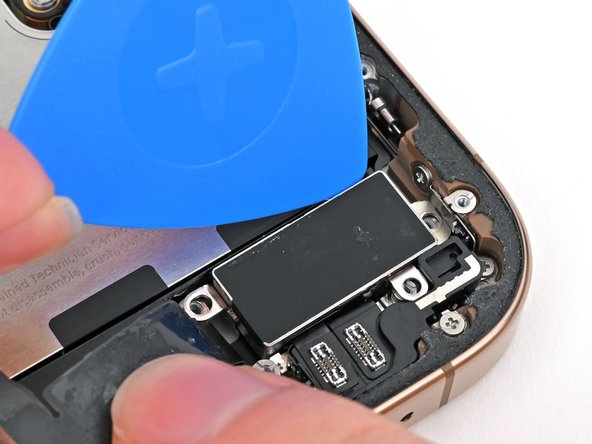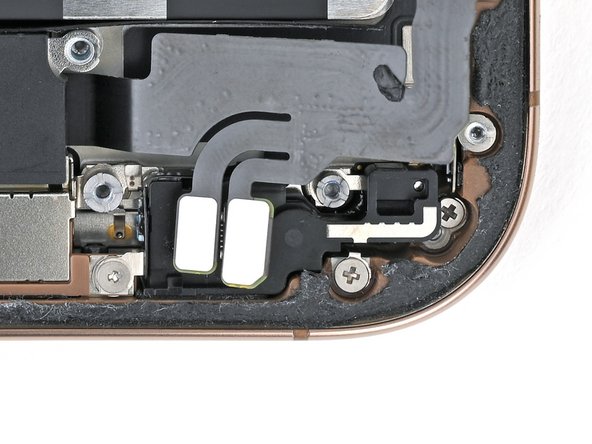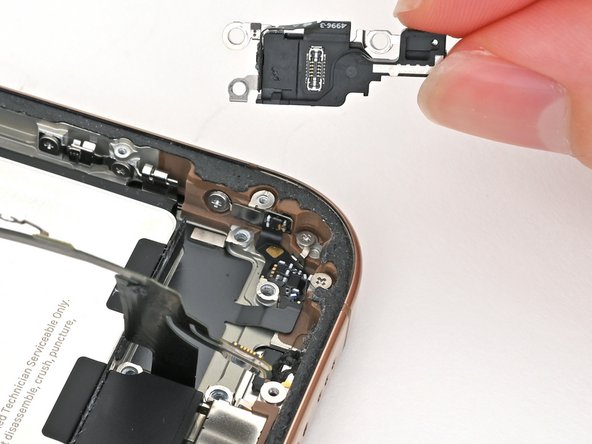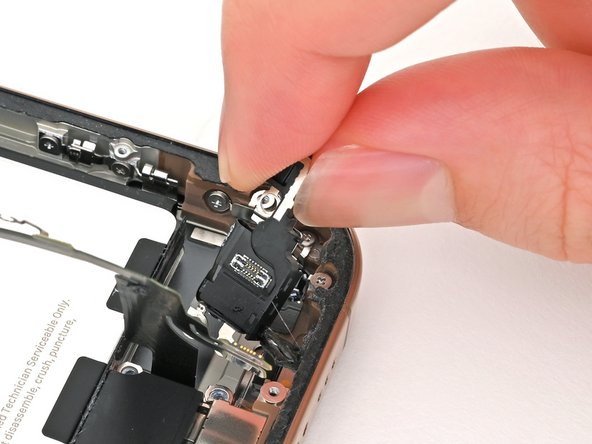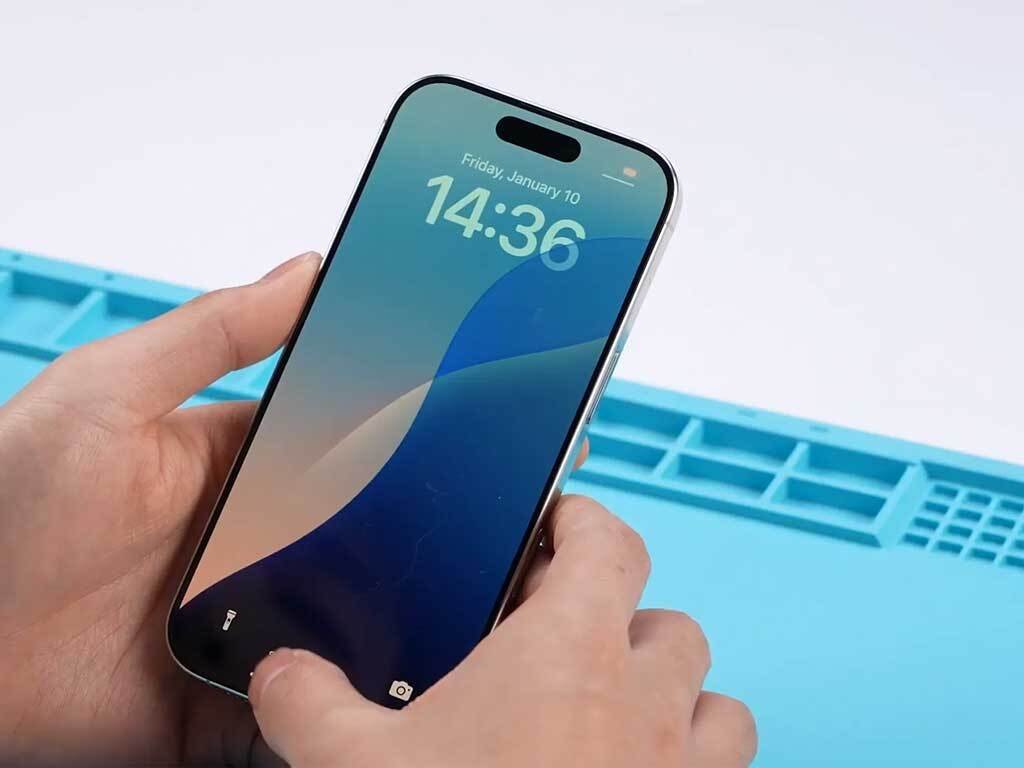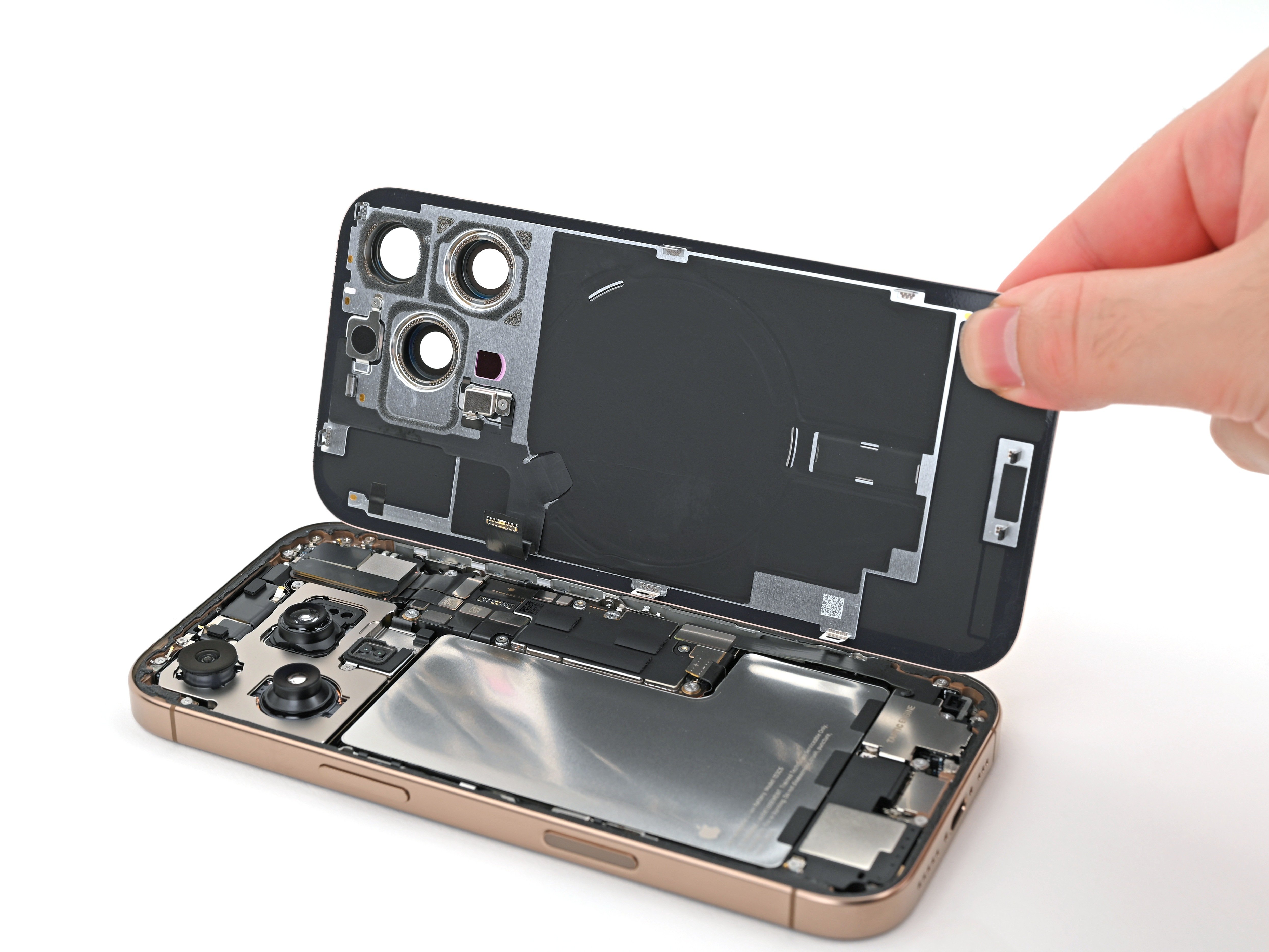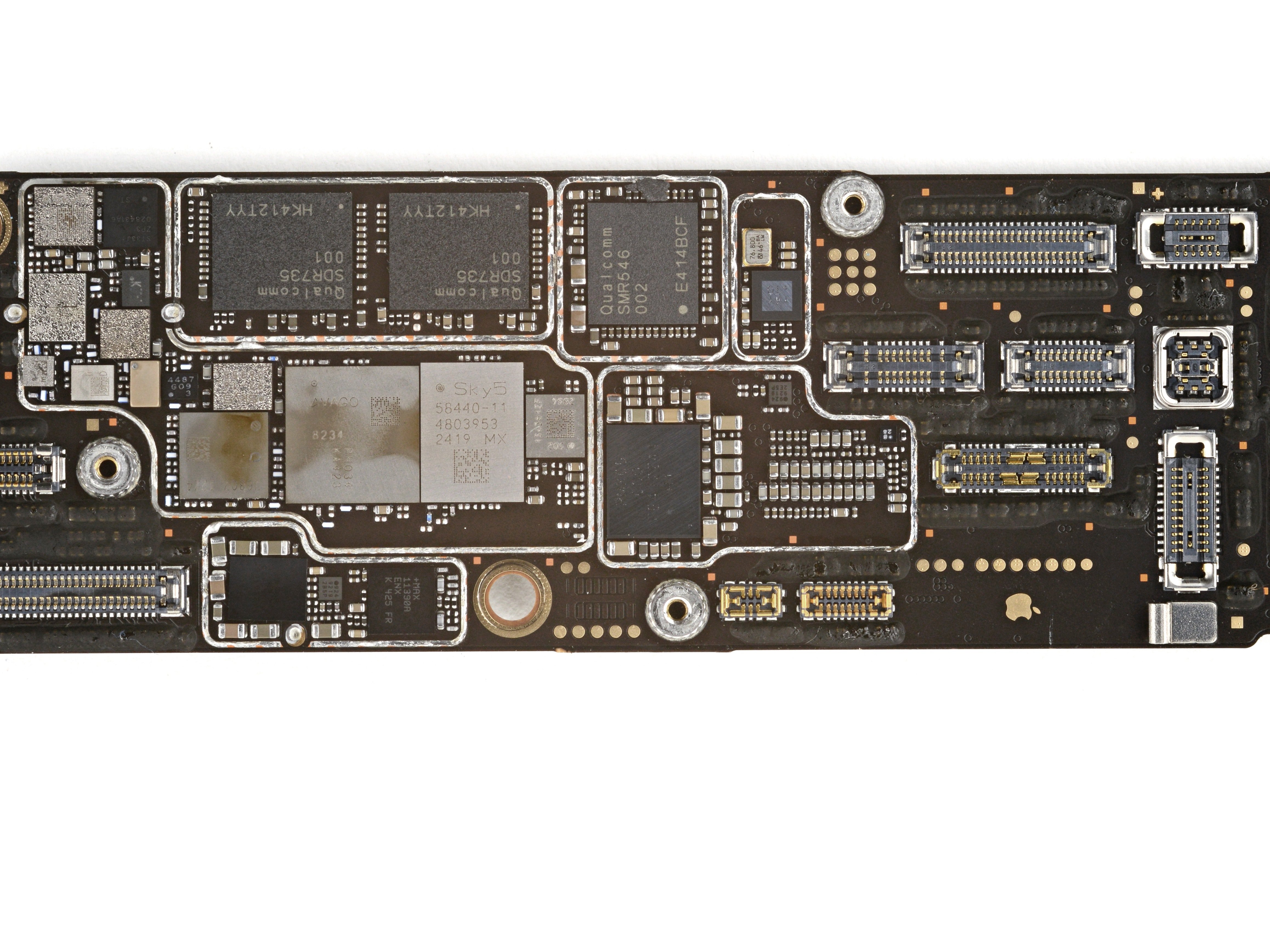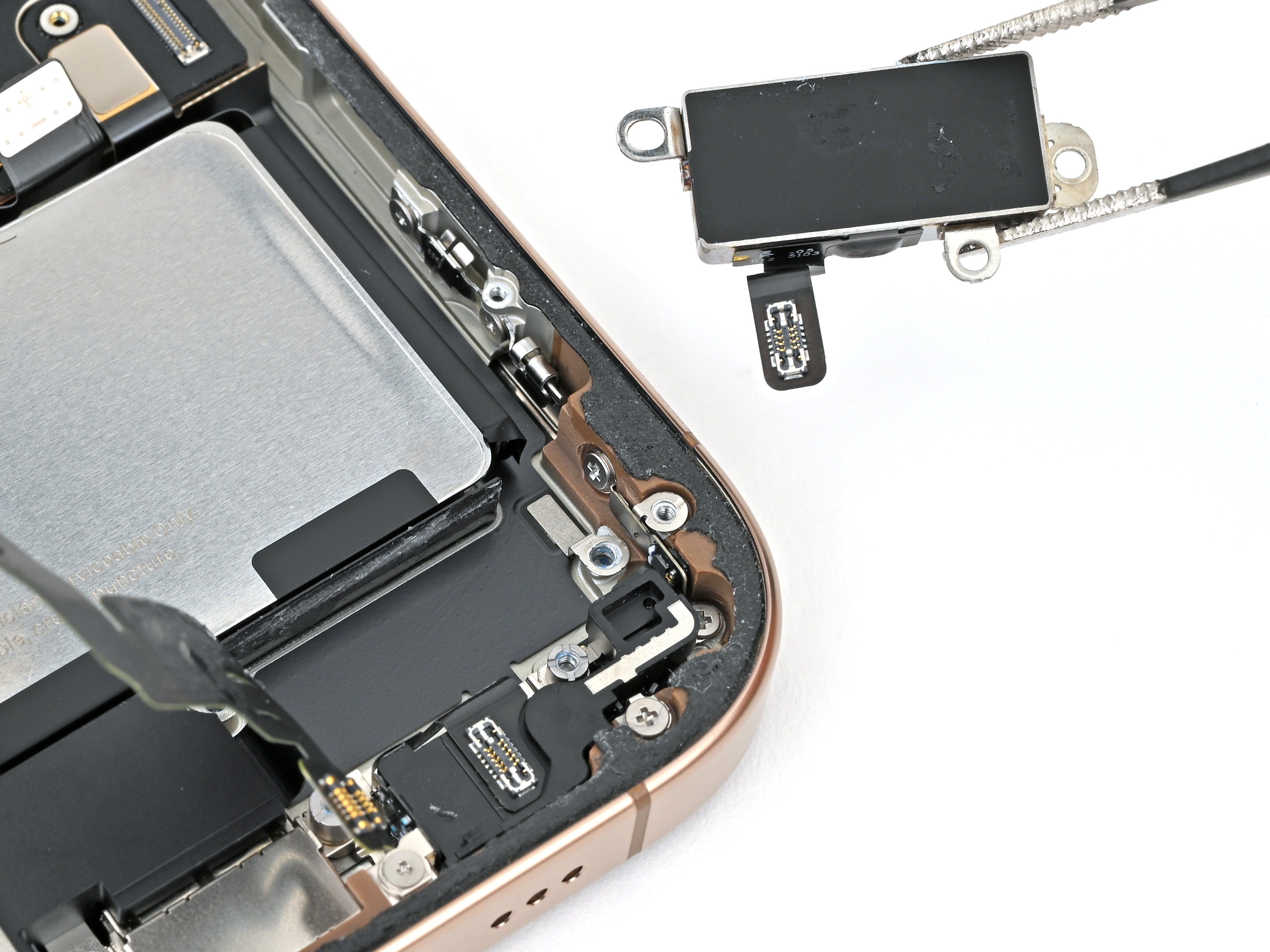iPhone 16 Pro Microphone Replacement
Duration: 45 minutes
Steps: 35 Steps
Use this guide to swap out the microphone on your iPhone 16 Pro. If your phone is struggling to catch your voice or acting up with spotty audio, it might be time for a new microphone. Make sure you have replacement back glass and microphone adhesive ready to get the job done.
Step 1
Let the battery run down until it's below 25%. A lithium-ion battery that’s fully charged can be a safety concern, so giving it a breather is a smart move. If you need help, you can always schedule a repair.
- First, disconnect any cables from your phone to give it some breathing room.
- Now, press and hold the power button along with one of the volume buttons, then slide to power off. Give your phone a little rest.
Step 2
Ensure there's a nice, smooth spot near the bottom edge that's large enough for a suction cup to grab onto.
- If the screen or back glass is really cracked, lay some overlapping strips of packing tape over the glass to keep shards in place and make the disassembly safer and easier. This quick step helps protect your hands and prevents glass from falling apart during the repair process.
Tools Used
Step 3
- Grab your marker and make a little mark about 3 mm from the tip. Easy peasy! If you need a hand, you can always schedule a repair.
If you insert your opening pick too deep, it might cause some damage. To keep things safe, mark your pick beforehand so you won’t go too far. You can also mark the other corners of the pick with different measurements to keep track. Or, as a quick trick, tape a coin about 3 mm from the tip of the pick. This extra guide helps prevent accidental damage during your repair. If you need help, you can always schedule a repair.
Step 4
- Grab your trusty P2 pentalobe screwdriver and get ready to work some magic! Carefully unscrew the two 7.4 mm-long screws on either side of the USB-C port. You've got this!
Step 5
Watch out! Don’t crank up the heat too much—your battery's a bit sensitive to high temps. Keep it cool to avoid any damage.
If you don’t have a fancy setup, a hair dryer or heat gun works great to warm up the bottom edge of the back glass until it feels nice and toasty.
- Warm things up a bit by applying a heated iOpener to the bottom edge of the back glass for about two minutes. This helps loosen things up and makes the next steps smoother. If you need help, you can always schedule a repair.
Tools Used
Step 6
- Stick a suction handle right above the USB-C port at the bottom edge of the back glass.
- Give that handle a firm, steady pull upwards to pop open a little gap between the back glass and the frame.
- Slide the tip of an opening pick into that gap to keep things moving.
Tools Used
Step 7
As you carefully loosen the adhesive securing the back glass, keep an eye out for the following areas to avoid any surprises. Stay steady, take your time, and if things get tricky, remember you can always schedule a repair for extra help.
If you happen to bend those spring contacts, no worries! Just give them a gentle nudge back into place with a spudger or an opening pick, aligning them perfectly with their shiny gold contact pads on the back glass.
- Watch out for that fragile cable connecting the back glass to the phone, right by the volume up button. Keep your pick away from this area to steer clear of slicing that cable!
- There are a bunch of spring contacts hanging out around the edge of your phone. So, be super careful not to push your pick deeper than recommended in each step to keep those contacts safe and sound.
Tools Used
Step 8
Keep your pick no deeper than 5 mm on the bottom edge to dodge any spring contact damage. Easy does it!
- Gently slide your pick along the bottom edge, working back and forth to break the adhesive seal.
- Once you've separated the bottom, leave your pick in the bottom right corner to keep the adhesive from sticking back together.
Step 9
- Warm up the right edge of the back glass until it's nice and toasty!
Step 10
Be careful around the volume buttons—don't slice too close or you might damage the wireless charging or flash cable. Stay safe and keep those cables intact!
- Gently slide your pick around the bottom right corner and up halfway along the right edge, feeling for that satisfying hard stop at the clip securing the back glass.
- Keep that pick in place to prevent the adhesive from sealing itself back up.
Step 11
- Warm up the left edge of the back glass until it feels nice and toasty.
Step 12
You’ll hear and feel the metal clips pop free as you gently pass them by.
- Pop in a second opening pick at the bottom edge—let's get this party started!
- Gently glide that pick around the bottom left corner and along the left edge of the screen to break the adhesive seal and free those metal clips.
- Keep this pick snugly placed at the top left corner to avoid the adhesive from getting too cozy again.
Step 13
- Warm up the top edge of the back glass, including around the volume buttons, until it feels hot to the touch. This helps loosen the adhesive and makes the next steps smoother. If you need a hand, you can always schedule a repair.
Step 14
Be careful not to push your pick more than 3 mm along the top edge, or you might accidentally mess with the spring contacts. Just a little nudge, not too deep!
You'll hear and feel satisfying clicks as the top two clips gently pop free—like unlocking a secret door. Keep at it, and you'll be on your way!
- Gently slide your opening pick along the top edge and curve it around the top right corner near the volume up button to loosen the adhesive.
Step 15
Hold up! Don’t go yanking the back glass off just yet—it’s still hanging on by a fragile ribbon cable. Take your time and follow the next steps to get it off without a hitch.
If the back glass isn't budging easily, don't stress—just take a step back and work your pick around the edges again to make sure you didn't miss any adhesive or clips still holding it down.
While you're inside, consider protecting the rear camera lenses with some polyimide tape. Be gentle and avoid pressing directly on them so you don't accidentally mess with the delicate stabilizers.
You might need to give the back glass a slight lift before swinging it open to make sure those clips fully let go. A little nudge goes a long way!
- Carefully swing the back glass open in the direction of the volume buttons.
- Prop up the back glass using a clean, solid object like a small box to keep the cable relaxed and safe.
- Take out the opening picks.
Tools Used
Step 16
- Grab your tri-point Y000 screwdriver and carefully remove the three screws holding down the lower connector cover: two measuring 1.2 mm in length and one at 1.0 mm. Keep track of those tiny screws—they're easy to lose! If you need help, you can always schedule a repair.
Tools Used
Step 17
- Grab your trusty tweezers or just use your fingers to gently lift and peel away the lower connector cover. Keep it light and steady—you're almost there! If you need help along the way, remember you can always schedule a repair.
Tools Used
Step 18
- Grab a spudger and gently pry up the battery press connector to disconnect it. When it's time to put things back together, carefully line up the connector over its socket and press down gently with your fingertip or the flat end of a spudger. Press on one side, then the other—no need to force it. If it doesn’t click into place easily, just reposition and try again. Need a hand? You can always schedule a repair.
Tools Used
Step 19
- Grab your tri-point Y000 screwdriver and loosen the four screws holding down the upper connector cover:
- Two screws, each 1.0 mm long
- One screw, 1.2 mm long
- One screw, 1.6 mm long
Tools Used
Step 20
- Gently grab the upper connector cover with your tweezers or fingers and lift it off like you're unwrapping a little gift.
Tools Used
Step 21
- Grab your trusty spudger and use its point to gently pry up and disconnect the back glass press connector. Take your time, no rush—this part's all about precision!
Tools Used
Step 22
- Gently lift the back glass off the frame and set it aside.
- Now, before you dive into reassembly:
- Take a moment to test your handiwork before sealing everything up. Give a quick reconnect to the battery and back glass (but hold off on the adhesive for now), power up the device, and see if it's working like a charm. Once you've confirmed it's all good, power it down, disconnect the battery again, and let’s continue putting things back together.
- Follow this guide to reapply the adhesive and get that back glass snugly back in place.
Step 23
- Grab your Phillips screwdriver and get ready to loosen up those three screws holding down the Taptic Engine cover. You’ll be dealing with one 3.0 mm screw and two 1.7 mm screws—pretty straightforward, just keep track of which is which. If you need a hand, you can always schedule a repair to get it done for you.
Step 24
- Grab your tweezers or just your fingers and gently lift the top edge of the Taptic Engine cover.
- Once the bottom edge pops free from the frame, go ahead and remove the Taptic Engine cover completely.
- When putting it back together, double-check that the bottom edge snaps securely back into the frame.
Tools Used
Step 25
- Grab your trusty spudger and gently lift to disconnect the lower assembly cable press connector from the logic board. Keep it smooth and steady—you're doing great! If you hit any snags, remember you can always schedule a repair for extra help.
Tools Used
Step 26
- Gently use the pointed end of a spudger to lift and unplug the two press connectors located near the bottom right corner of the frame.
Tools Used
Step 27
- Grab your tri-point Y000 screwdriver and carefully unscrew the tiny 1.0 mm screw holding down the lower assembly cable. Steady hands, you got this!
Tools Used
Step 28
- Grab your trusty iOpener or a hair dryer and give some love to the lower assembly cable section right above the Taptic Engine. Warm it up until it's nice and toasty to the touch.
Tools Used
Step 29
- Gently slide an opening pick beneath the lower assembly cable to free it from the Taptic Engine's embrace.
- Carefully nudge the cable aside, giving you the perfect view of the Taptic Engine. You've got this!
Step 30
- Grab a Phillips screwdriver and gently remove the tiny 1.9 mm screw holding the Taptic Engine in place. Easy does it—you're on your way to a smooth repair. If you need a hand, you can always schedule a repair.
Step 31
- Gently slide the tip of your opening pick along the top edge of the Taptic Engine to loosen the plastic buffer strip that's stuck to it.
Step 32
Handle with care—avoid poking or prying at the battery like it's a delicate treasure. Keep things smooth and safe!
- Gently slide the tip of a spudger under the top-right corner of the Taptic Engine. A little wiggle and you'll have it loose in no time.
- Carefully lift the Taptic Engine out and set it aside. You're one step closer!
Tools Used
Step 33
- Start by removing the trio of screws holding down the microphone: a 3.6 mm‑long standoff screw, a 2.9 mm‑long standoff screw, and a 1.3 mm‑long tri-point Y000 screw. Keep these screws safe—you'll need them to put everything back together. If you run into any trouble, remember you can always schedule a repair for extra help.
Step 34
Careful not to pry on the battery—it's sensitive and could get hurt!
You'll notice a bit of resistance as the microphone detaches from its frame gasket. Don't worry, it's just making sure it's snug in there. Keep going, you've got this!
Step 35
- Time to put your iPhone back together! Just follow these steps in reverse and you’ll be golden.
- Got some e-waste? Don’t just toss it! Take it to an R2 or e-Stewards certified recycler and do your part for the planet.
- Things didn’t go exactly as you hoped? No worries! Check out some basic troubleshooting tips or swing by our iPhone 16 Pro Answers community for some friendly advice.
-
